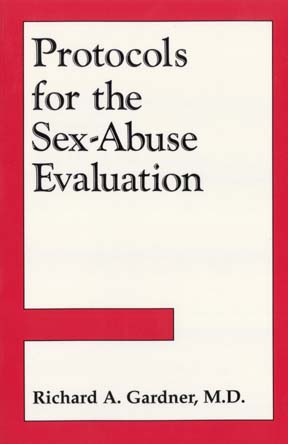|

|
Protocols For The Sex-Abuse Evaluation Complete How-To for Conducting These Demanding Evaluations |
|
HIGHLIGHTS
|
|
Since the early 1980s, Dr. Richard Gardner has been developing criteria for differentiating between true and false sex-abuse accusations. Psychiatrists, in accordance with their training, tend to focus on background history, the mental status, and data necessary for a diagnosis. Most often, all this information is of little probative value in a sex-abuse evaluation. Similarly, psychologists, again in line with their training, tend to rely heavily on testing instruments—especially the MMPI-2, the Rorschach, and the TAT. These too are of little probative value in a sex-abuse accusation. Furthermore, few protocols are available, protocols specifically designed to enable examiners to differentiate between true and false accusations. It was from these observations that Dr. Gardner devised a series of protocols which should prove useful for examiners involved in these important and demanding evaluations. The protocols do not simply present his differentiating criteria, some of which have already been published. Rather, they incorporate the criteria into a protocol that delineates clearly the interview sequences that should be followed in the context of which these criteria are applied. Furthermore, he provides throughout specific questions that should enhance immeasurably the utilization of the protocols. Six separate evaluative protocols are provided for the alleged child victim; the male alleged perpetrator; the female alleged perpetrator; the accuser, when the accused is a family member; the accuser, when the accused is not a family member; and last, the adult female belated accuser/victim.
|
